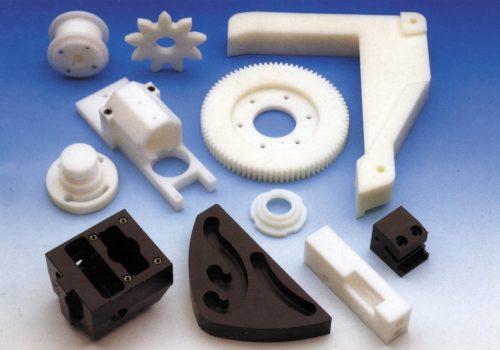
Two of the most widely used engineering thermoplastics are nylon (polyamide, “PA”) and acetal (polyoxymethylene, “POM”). The choice between the two can be difficult since their basic physical properties are similar. (FUN FACT –“Nylon” was once DuPont’s trade name for PA, but they didn’t protect it and it became the generic description!)
For our purpose here, we are discussing these materials in general terms without differentiation of extruded vs cast in nylon and homopolymer vs copolymer in acetal.
Material Cost
Acetal shapes tend to be more expensive than nylon by about 10%. The difference gets larger as size increases due to the economy of casting nylon in large shapes.
Availability
New technology allows acetal to be available in plate up to 10” thick and rod to 24” diameter as well as tubes up to 20” OD. Nylon is available in both small and massive shapes (78” diameter sheaves and 14 ft long slide bars have been cast in nylon). Additionally, nylon is readily available in custom profile extrusions (edge guards, clip-on wear strips) where acetal generally is not.
Formulations
Nylon has a wide availability of modified versions to improve wear resistance, heat stability, impact resistance and flame retardancy. Acetal has some of these variations but less than the nylon family.
Key Differences
Machineability
Both materials machine well, but nylon is known to generate chip wrap requiring spindle clearing. Both materials can be finished to excellent surface finishes
Moisture Absorption
Nylon picks up ~2.5% moisture atmospherically, and up to 7% at saturation. This factor can inhibit dimensional stability and wet wear resistance. Acetal’s water absorption is 0.2% and 0.9%, respectively, which allows for closer tolerances in wet environments.
Wear Resistance
As a general rule is that nylon will outwear acetal by ~4:1 in dry applications and acetal will outwear nylon by the same ~4:1 ratio in a wet environment.
Summary
In most applications, many materials will work and the selection of the most appropriate candidate material can rest other considerations. WS HAMPSHIRE has the expertise to ask the right questions and make effective recommendations to assist you in finding the right material at the right price for your application!
Tom Connelly is a self proclaimed “Street Engineer” with over 40 years in the plastics industry.
